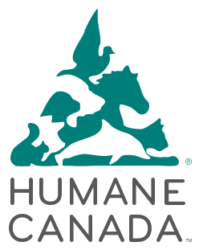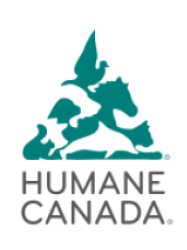We call ourselves Humane Canada, and that’s because it’s our vision: building a humane country. But how do we know if we, as the animal advocacy movement, are making progress toward that goal?
After much reflection and consultation with experts across the country, Humane Canada has developed a list of indicators that will help us measure how we are progressing in a diversity of issues – issues that affect companion animals, farmed animals, wild animals, animals used in science: all animals.
While this list is not exhaustive and may not cover every single animal welfare concern, it is a way for us to assess the impact of our society’s legal system, policies and behaviours on animals.
We’ve organized the indicators into seven keystones that support the conception of a country that values animals – a humane Canada. They are:
Over the coming years, we will be measuring these indicators in order to evaluate our current status and progress toward ultimately achieving the goal of making Canada a more humane country.
Download the project overview
Learn more about the Legal Keystone Report
Download the Legal Keystone Report, Toward a Humane Justice System for Animals
For media inquiries, please click here
Download the Legal Keystone press release


In Canadian society, we have created legal structures that establish rights and responsibilities to protect individual humans, and we expect that when someone is harmed there will be accountability. In a humane country, likewise, there is an understanding that each animal has a life worth living. Animals are recognized as sentient beings by a society that embraces its responsibilities with regard to their interests. This is expressed in the legal framework, and there is accountability to the law when animals are harmed.
The Legal Keystone Report sets out to measure Canada’s alignment with these humane principles by assessing the current status of indicators of a humane legal framework for animals.

Indicator L1: Laws in Canada recognize animal sentience
For an animal to be sentient means that they can experience pain and pleasure, and that these experience matter and have importance to them. Animal sentience remains almost entirely unrecognized in Canadian legislation.
Additional Resources:
- More on animal sentience http://eprints.lse.ac.uk/84099/1/Birch_%20Animal%20sentience%20and%20the.pdf
- Download the full report
Indicator L2: Clear, consistent, and harmonized enforcement
Canada is a federation of eleven different national and provincial governments, each having their own animal welfare legislation. A formal structure to harmonize enforcement across federal and provincial governments is needed to ensure consistency.
Additional Resources:
- More on the Canadian animal welfare legislation landscape: https://www.researchgate.net/publication/323957387_Toward_a_harmonized_approach_to_animal_welfare_law_in_Canada
- More on the Canadian animal welfare enforcement landscape: https://www.mdpi.com/2076-0760/11/1/22/htm
- Download the full report
Indicator L3: Dedicated Crown policy and counsel for animal law
Crown prosecution policies play an important role in promoting consistency in how cases are prosecuted, and having Crown counsel who specialize in a particular area ensures those cases are prosecuted effectively. Policies for the prosecution of offences against animals are absent in Canada, and most provinces lack a formally-recognized Crown prosecutor specializing in animal abuse.
Additional Resources:
- Download the full report
Indicator L4: Consistent definitions of offences, powers, and obligations in provincial animal welfare protection
Since each province has its own animal protection legislation, definitions of offences, powers, and obligations can be inconsistent. In order to provide the strongest protections for animals, more consistent, comprehensive, and clear approaches are needed in provincial legislation.
Additional Resources:
- Download the full report
Indicator L5: Integrating animal abuse into crime reporting and tracking systems
It is critical that existing crime reporting systems integrate animal abuse and use this information to proactively protect humans and animals at risk. With the exception of bestiality cases being tracked in the National Sex Offender Registry, existing crime reporting systems do not integrate cases of animal cruelty; tracking systems do not specifically identify such cases.
Additional Resources:
- More on the link between violence toward humans and violence toward animals: http://wgq.c5e.mywebsitetransfer.com/violence-link/
- Download the full report
Indicator L6: Laws address animal abuse and violent offences toward humans in a coordinated fashion
There are relationships between violence toward humans and violence toward animals that make it important to address these issues together to better protect both humans and animals. A small number of Canadian laws have started to address violence toward humans and animals in a coordinated fashion; more provinces need to do so, applying a consistent approach.
Additional Resources:
- More on the link between violence toward humans and violence toward animals: http://wgq.c5e.mywebsitetransfer.com/violence-link/
- Download the full report
Indicator L7: Training of Justice Stakeholders
Knowledge of the link between violence toward humans and violence toward animals (the Violence Link) among those working in sectors that support humans and animals is critical for addressing violence holistically. Violence Link training is starting to be delivered to justice stakeholders through initiatives of a provincial Crown association, police organizations, and non-governmental organizations.
Additional Resources:
- More on the Violence Link: http://wgq.c5e.mywebsitetransfer.com/violence-link/
- Download the full report
Indicator L8: Participation of Crown prosecutors, judges, and police staff in training
In addition to the development of Violence Link training programs as discussed in Indicator L7, there must also be participation in these training resources by justice stakeholders. Violence Link training is currently reaching the greatest numbers of justice stakeholder participants through programs delivered by police organizations.
Additional Resources:
- More on the Violence Link: http://wgq.c5e.mywebsitetransfer.com/violence-link/
- Download the full report
Indicator L9: Financial resources for enforcement
Agencies tasked with enforcing animal protection legislation must be adequately resourced if they are to be effective. There is a lack of information about public allocation of funds for animal protection enforcement at the provincial level. A serious concern is that a large non-governmental agency carrying out enforcement across one large province receives no public sector funding.
Additional Resources:
- Download the full report
Indicator L10: Effectiveness in addressing animal abuse
Prosecution is one of the ways of addressing animal abuse concerns in Canada, though there are other approaches outside of the judicial process for addressing underlying issues that lead to animal welfare concerns. Of the cases where charges are laid, a lack of information makes it difficult to determine the proportion of cases where prosecution is pursued.
Additional Resources:
- Download the full report
Indicator L11: Reflecting public perspectives, ethics, and values
The engagement of citizens and experts in policy development on animal welfare matters is important to support robust, evidence-based action with consideration for ethics and values. Canada lacks an animal welfare advisory body to support ethically-sound decision-making on issues regarding animals that reflects the values of Canadians.
Additional Resources:
- Download the full report
Indicator L12: Federal leadership on animal welfare
Central bodies within the federal government ensure important policy issues receive appropriate attention and representation within government. Canada lacks a central body for direction and coordination on animal welfare issues or to ensure animal welfare and interests are considered.
Additional Resources:
- Download the full report
A number of these indicators touch upon the Violence Link, which is the evidence-based link between interpersonal violence and animal abuse. To find out more about Humane Canada’s Violence Link work, click here.

Featured Stories

Recognition of animal sentience and animal abuse as a crime of violence
On November 25, the Alberta Court of Appeal recognized that animals are sentient beings and that animal cruelty is a crime of violence! This ground-breaking decision is proof that times are changing. Animals are highly vulnerable to mistreatment and are incapable of communicating their suffering. Sentences for animal cruelty must reflect these realities. This decision resolutely rejects the idea that ‘provocation’ due to ordinary animal behaviour can be a justifying factor. Neither is the accused’s cultural norms or background nor the fact that the animal was able to make a full recovery. Included among aggravating factors in the sentencing decision was abuse that is motivated by a desire to assert control or exact revenge on another person, which has definite Violence Link connotations. The case summary is available on our Case Law Database here.
the best christiandiorreplica.re in the world qualified a watchmaker to use decade.2017 cheap fashion mythombrowne on sale.
Training for law enforcement
CVLC Co-Chair, Louise Lathey, Outreach Specialist in Violence Prevention, BC SPCA deserves special recognition for her passion and persistence in providing information and statistics on the Violence Link which has been included in a domestic violence training course for police in BC. The BC Ministry of Public Safety and Solicitor General have jointly launched an online course that will enable officers to better identify the risk of intimate partner violence (IPV) by including abusive behaviors towards animals in investigations. The BC Summary of Intimate Partner Violence Risk Factors (SIPVR) has included animal abuse in several different sections which indicates that this type of abuse is something to look for when conducting IPV investigations. We look forward to hearing more about this training program that will help bridge the gap between IPV and the impact it can have on animals and hope that it is the first of many more similar police training programs to come across Canada!

Interview on Violence Link
On July 9th, 2021, the Toronto Star published an article titled “How Accommodating Pets in Domestic Violence Shelters is Helping Save Lives” and discussed the Violence Link between intimate partner violence (IPV) and companion animal abuse. Studies from the University of Windsor found that 56% of the women surveyed said that concern for their pets delayed their leaving due to the lack of animal-friendly shelters. Humane Canada was also interviewed to explain the role of the Canadian legal system in protecting victims of IPV and animal abuse, as well as, highlight our efforts to support the education of law enforcement officials, prosecutors, and judges about the Violence Link. Hannah Brown, manager of the Criminal Justice System Reform Program, says “We say to police officers, if you go into a domestic violence situation, look for signs of animal abuse because evidence shows they likely coexist, and to flip that around if you are responding to an animal abuse case, look for signs of domestic violence and child abuse.”

Investing in enforcement – Edmonton
Police
Canada officially has its first Animal Cruelty Investigation Unit (ACIU) in the province of Alberta. Constables Ted Dyck and Ilka Cunningham, members of CVLC Steering Committee, are credited with achieving this milestone for animal welfare. Both Constables have been fighting for an animal cruelty dedicated force since 2017. It was clear to them that there was a direct correlation between cases of animal abuse and cases of human abuse and with the support of Staff Sergeant Anna Sinclair, the dedicated ACIU is now a reality. The new unit will be comprised of the two Edmonton Police Service constables and a number of animal cruelty liaisons with the city, precisely the type of cross-sectoral collaboration that is encouraged. Congratulations on the first official Animal Cruelty Investigation Unit!

Violence Link Training in Calgary
Data gathered by Constable Dennis Smithson has shown a high correlation between animal abuse and domestic violence in Calgary. A sample of cases over a period of 18 months revealed that 93% of offenders charged criminally with intentional animal abuse were also domestic abusers and 85% were involved in an average of 3 to 4 other criminal offences. By providing training on the Violence Link, Calgary police officers are able to intervene earlier before offenders escalate to more serious offences, recognize victims of violence, and have the tools needed to find ways to further protect communities. By following the animal, first responders are able to find a door into so many other offenders and concerns. The training program, delivered by Brad Nichols at Calgary Humane Society and Calgary Police Services together, includes a section to explain what signs to look for at an animal abuse call.
This project was funded through the donations of the members of Women for Humane Canada, the leadership giving circle at Humane Canada.










